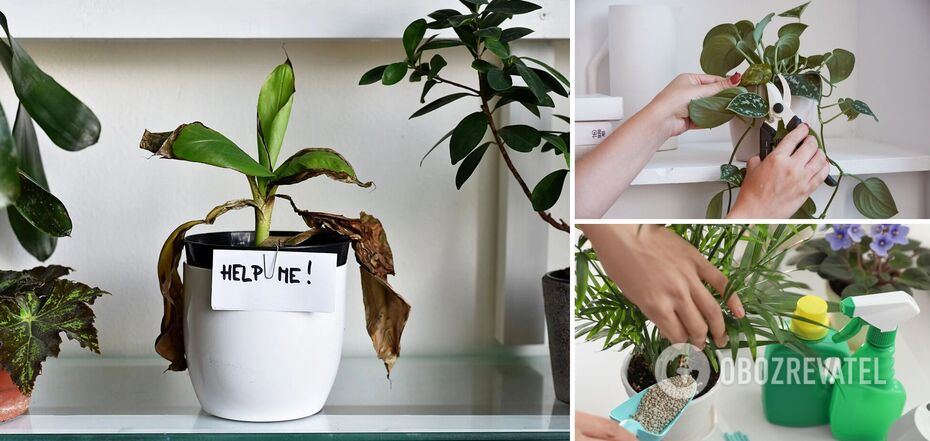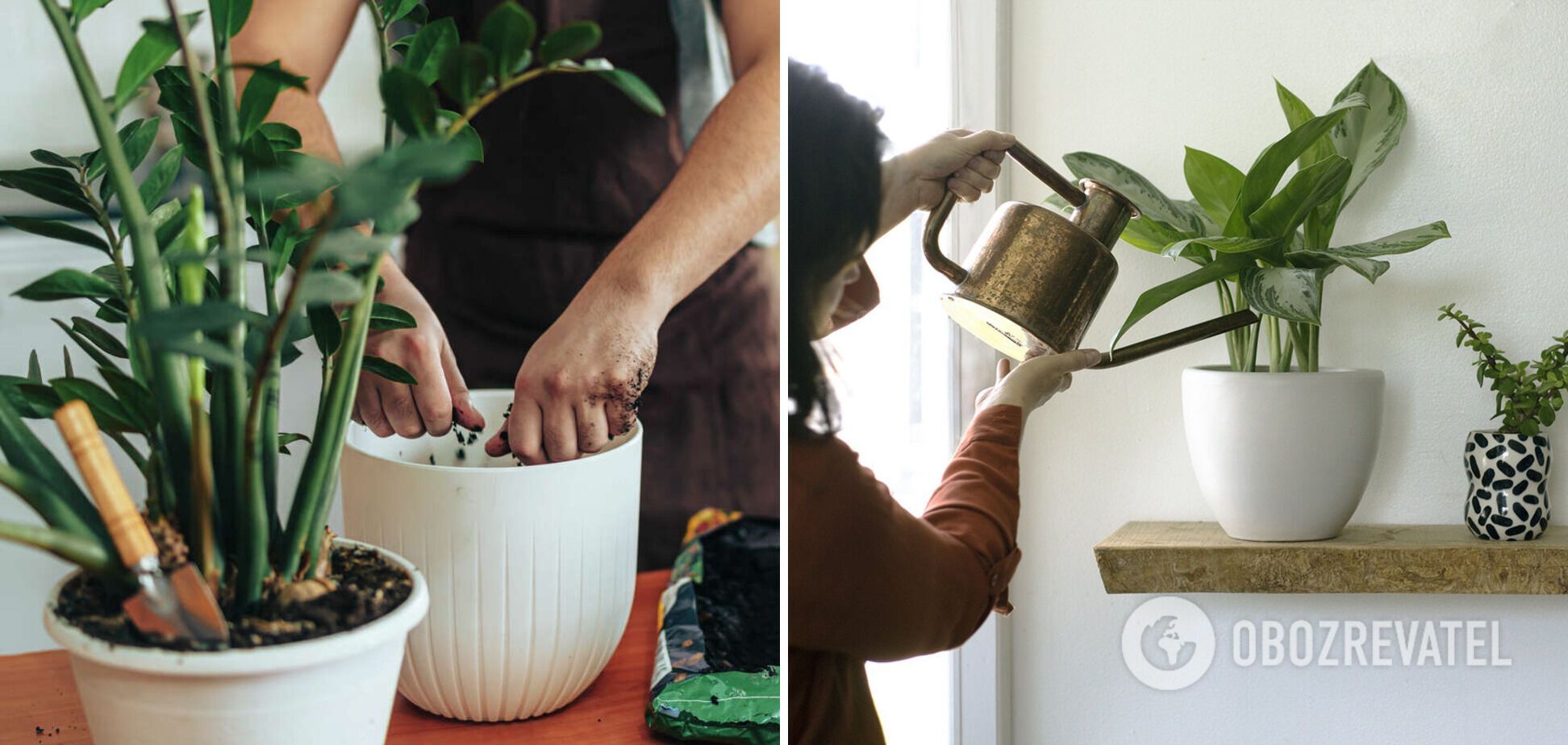Entertainment
How to save wilted indoor flowers: simple fertilisers will help
The sight of a houseplant drying up and gradually dying before your eyes is very upsetting. But experienced growers say that even when the situation seems hopeless, you shouldn't give up - flowers are very resilient and you can still cure your pet. You need to know a few secrets on how to revive a dried up houseplant.
Sante Plus has collected the main tips on this subject. It also publishes a recipe for a remedy that can be very useful in such a situation.
Examine the plant carefully
If your flower has begun to dry out, some new elements have appeared on it, such as cobwebs, snow or something foreign, you see mould on the soil or notice other unpleasant signs, do not rush to say goodbye to it. First, look for signs of the cause of the disease. Try to find small pests in the leaves or on the stem of the plant.
You will need a lot of patience to give potted plants time to recover. Most often, very dry or wilted plants need several weeks to regain their beauty.
Read more about the conditions for keeping a flower. Perhaps at this stage, you will see what you did wrong and can easily correct your mistake. Your pot is not a decor, but a living being capable of regeneration - always remember this.
What are the causes of plant death
One of the main reasons for the death of flowers is pests. They suck the sap from the plant or feed on its parts, such as leaves or roots, depriving it of strength. In such situations, you should pay attention to holes, discoloured, twisted and bent leaves, as well as swollen stems. To get rid of uninvited guests, flower growers recommend gently wiping each leaf with a cloth dipped in a solution of laundry soap.
Excessive watering can also kill the plant. Usually, a waterlogged plant has brown or yellow leaves. How to fix this problem? First, take a long break from watering the soil and place the pot in a place protected from direct sunlight. Let the clod of earth dry out.
Insufficient watering is also a big problematic issue. Dry plants usually have brown spots on the leaves, especially along the edge, and if you don't deal with the problem, such leaves will eventually fall off. Find out what kind of moisture your flower needs. Of course, remove dead leaves, as well as those that show signs of wilting and will soon fall off the stem.
How do I revive a wilted houseplant?
Plants can die from a lack of nutrients. The condition of the root can tell you a lot about its health. As a rule, the root should be smooth, thick and have white tips. For a healthy root system, you need to change the substrate or even the pot from time to time. Then the plant will develop well.
If necessary, start feeding your plant with a natural fertiliser. During the growing season, this should be done several times a month, in winter - about once a month. You can prepare compost for this on your own, or you can buy a special kit for this purpose. This way, you will recycle your household waste in an environmentally friendly way and be sure of the composition of the compost.
As a simple top dressing, you can use coffee grounds, orange or banana peels, and eggshells. Here's what you need to do:
Coffee grounds - dry the leftover coffee grounds and sprinkle a small amount on the potting soil, you can also add a little grounds to the topsoil. This method is suitable for plants that like an acidic environment for their roots.
Eggshells - grind the shells into as fine a powder as possible and sprinkle a small amount of soil near the plant. Lightly work it in with a flowerpot rake to get some of the fertiliser into the ground. You can also add eggshells to the irrigation water while it is still standing. This will enrich the water with nutrients.
Orange peel - Cut the fresh peel into small pieces and add it to the top layer of soil in the pot. Then sprinkle the fertiliser on top with fresh soil. You can also dry the peel and grind it into a powder, which you can sprinkle on the potting soil.
Banana peel - Cut into small strips, banana peel can be used as a mulch for a flowerpot. Soaking the strips in water for a few days and then straining the liquid makes a good liquid fertiliser for indoor plants.
You can also give a wilted plant a three-step resuscitation:
Cut off all dry leaves. Remove them with scissors, secateurs or a very sharp knife at ground level.
Place the plant pot in a bucket of settled water at room temperature. Cold tap water is not suitable for the procedure.
When bubbles stop coming to the surface, remove the plant and let it drain. Then place it in a cool place, but certainly not in the cold, and keep it out of direct sunlight. Soon you will see it sprouting young shoots.
Earlier, OBOZREVATEL published instructions on how and when to transplant indoor plants.
Subscribe to OBOZREVATEL's Telegram and Viber channels to keep up with the latest news.




























